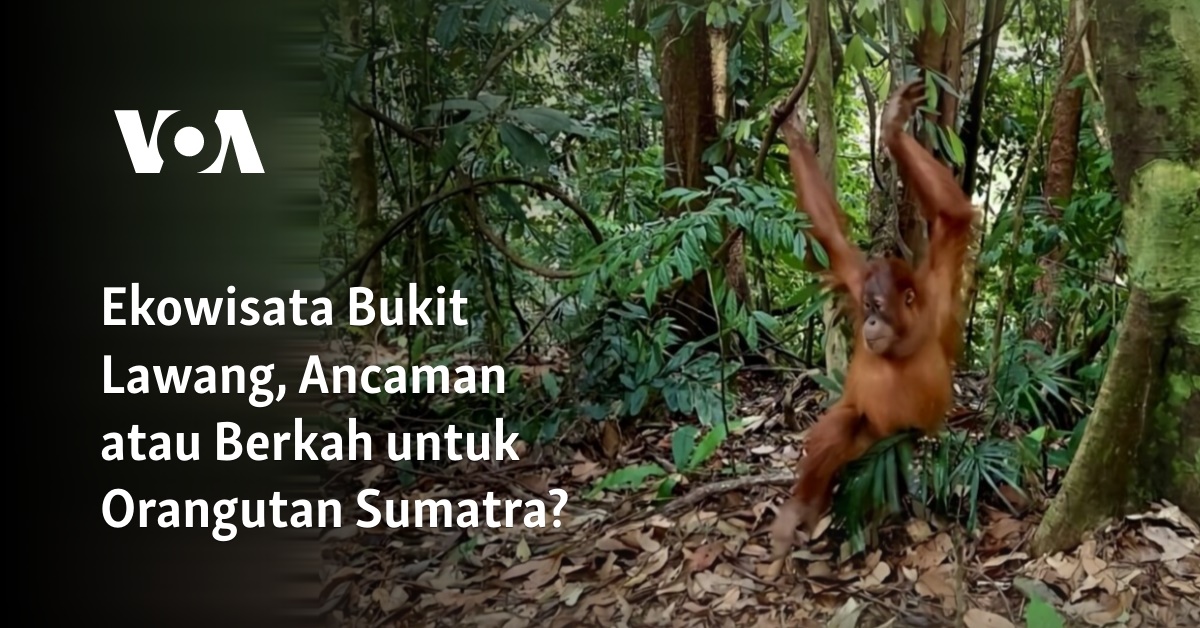
Bukit Lawang, located in the Kecamatan Bahorok district of Kabupaten Langkat in North Sumatra, is known as one of the natural tourist attractions on the island. It is also located within the Gunung Leuser National Park (TNGL). Today, Bukit Lawang has become a leading ecotourism destination in North Sumatra. Ecotourism in Bukit Lawang offers a million charms through its natural landscape, flora, and fauna that thrive within the conservation area. Natural attractions in Bukit Lawang are also varied, ranging from river rafting to trekking in the forest. Over time, Bukit Lawang has also offered nature tourism for local and foreign tourists to interact with Sumatran orangutans (Pongo abelii). The offer of eco-tourism to see the orangutans has become a magnet for tourists to visit Bukit Lawang.
According to data from 1973 to 2003, the presence of Sumatran orangutans in Bukit Lawang is estimated to reach more than 200 individuals, but there is no recent data available. The head of TNGL, Mamat Rahma, said that the orangutans, which are a tourist attraction, are a semi-wild species that come from rehabilitation activities. However, there are times when visitors may encounter wild Sumatran orangutans that are not part of the rehabilitation program, he said.
The rise in the number of tourists in the area raises concerns about whether ecotourism activities will become a blessing or a threat to this extremely rare species. Increased tourism has the potential to transform the behavior of Sumatran orangutans from initially being wild orangutans to semi-wild, due to interactions with humans through direct encounters, Mamat said. This possibility is further evident, as increased restrictions placed on Bukit Lawang during the COVID-19 pandemic partially positively impacted the orangutans’ natural behaviors, since direct interactions between humans and orangutans were reduced.
According to the TNGL data from 2020, no local or foreign tourists visited Bukit Lawang. After the COVID-19 pandemic, tourist numbers began to increase, with seven foreign tourists and 1,099 local tourists visiting Bukit Lawang in 2021. Tourist numbers skyrocketed to 5,466 foreign tourists and 7,419 local tourists in 2022. In the first quarter of 2023, 2,370 foreign tourists and 1,288 local tourists visited the ecotourism site.
Given the drastic increase in tourist numbers to Bukit Lawang following the COVID-19 pandemic, the TNGL has implemented several measures to ensure that the behavior of the Sumatran orangutans remains natural and not habituated to human interaction. These measures include educating visitors to keep their distance from the rare species and to avoid feeding them. In the future, the number of visitors who can enter the TNGL area to observe the orangutans’ wild behavior will be restricted and regulated.
Onrizal, a researcher and lecturer on environmental and forestry at the University of North Sumatra (USU), explained that Bukit Lawang underwent a long transformation process from a rehabilitation center for orangutans in 1973 to a Sumatran orangutan observation site since 1991. With an eye tobalanced orangutan conservation and ecotourism, particularly in Bukit Lawang, Onrizal recommends establishing daily quotas on the number of visitors.
Suci Utami from the Indonesian Orangutan Conservation Forum (Forina) agrees that wild orangutans living in Bukit Lawang may be susceptible to habituation from the presence of tourists. Furthermore, Sumatran orangutans are considered more social than other orangutan species, further placing them at risk of becoming habituated. To protect the natural behavior of these primates, Utami suggests that educational measures for visitors be emphasized and the number of visitors regulated to maintain balanced conservation and ecotourism activities.
Sumatran orangutans are a protected wild animal in Indonesia based on the Ministry of Environment and Forestry Regulation …


